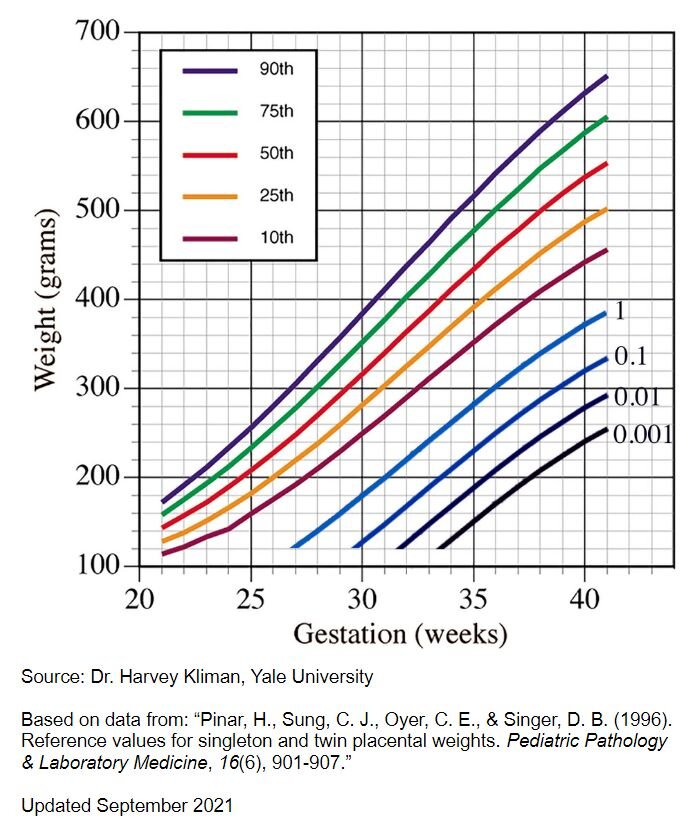Placental Weight Percentiles
Placental Weight for Gestational Age
Placental pathology reports often only say "placenta less than 10th percentile" or similar. This is an insufficient level of precision, especially in cases of stillbirth when research shows that poor birth outcomes are associated with increasingly smaller placentas. This graph can help families learn more precisely how small their baby's placenta was. As a general rule of thumb, any placenta weighing less than 400g at term is a small placenta. The goal of EPV is to detect these small placentas before a stillbirth occurs when action can be taken to reduce the chance of a stillbirth, instead of only after a stillbirth or other poor birth outcome. (Pinar’s Reference Values for Singleton and Twin Placental Weights are the standard percentiles used by many placental pathologists.)
Fetal and placental weight ratios
High fetal weight compared to placental weight is another indicator that a baby may have been stillborn due to outgrowing his/her small placenta. A “normal” ratio is 6:1. As a general rule of thumb, an 8:1 Fetal:Placental weight ratio or higher is concerning. Said another way, a baby born with a body weight more than 8x greater than his/her placenta weight may have been stillborn due to a small placenta relative to body size.
Ratio and Percentile Calculations
The BW:PW ratio is simply the birthweight divided by the placenta weight. These ratios can now be automatically caluclated in the Merwin’s EPV Calculator app (iPhone and Android) and EPV web calculator.
The BW%ile:PW%ile, or fetoplacental ratio, are these two numbers in a ratio.
BW%ile can be found here: Fenton 2013 Growth Calculator for Preterm Infants
PW%ile can be found in the Merwins EPV Calculator iPhone app and is based on a formula that calculates the placenta weight %ile based on trimmed placental weight and gestational age. (The correction from not trimmed to trimmed is: -16%.)
Would you like to add your stillborn baby’s data to Measure the Placenta’s collection?
If your baby was stillborn and you would like to submit your baby's name and placenta weight data for future use, please complete this Google form.
The data in the babies by GA and PW graph was collected from families who shared their babies’ information for our NICHD RFI submission and on our Placenta Related Stillbirth Support and Education Facebook Group.
Placenta Weight Percentile Sources:
10th and higher: Pinar, H., et al. "Reference values for singleton and twin placental weights." Pediatric Pathology & Laboratory Medicine 16.6 (1996): 901-907."
Less than 10th Percentiles: Dr. Harvey Kliman, Yale University, email 2022


